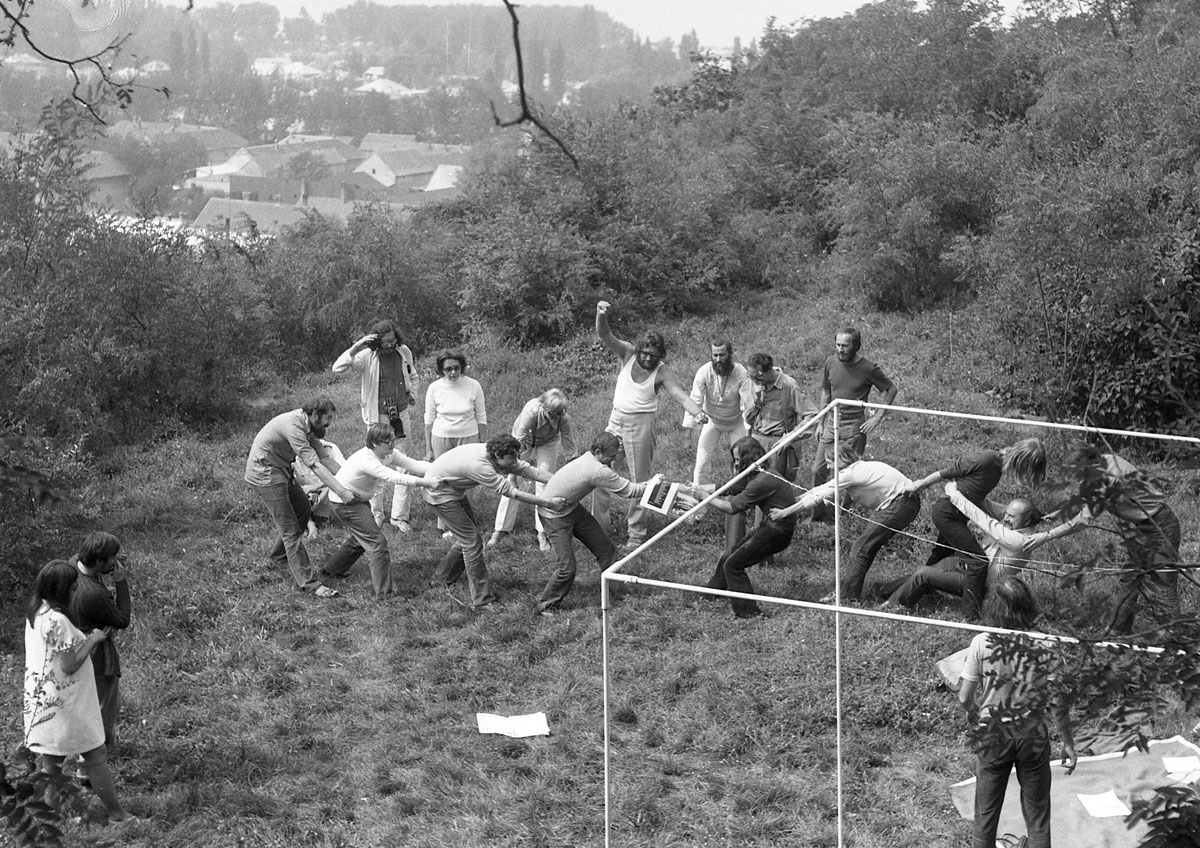
26-27 August 1972.
A meeting of Czech, Slovak and Hungarian artists organized by László Beke
Imre Bak, Peter Bartoš, László Beke, Miklós Erdély, Stano Filko, György Galántai, Péter Halász, Béla Hap, Ágnes Háy, Tamás Hencze, György Jovánovics, J. H. Kocman, Péter Legéndy, János Major, László Méhes, Gyula Pauer, Vladjimir Popović, Petr Štembera, Rudolf Sikora, Tamás Szentjóby, Anna Szeredi, Endre Tót, Péter Türk, Jiří Valoch.

exhibition - “tug-of-war” - Handshake action
„In this period I tried to work in liminal fields. There had been a few things in Boglár already that I made in order to demonstrate that even though I was not an artist, a critic could produce art, too.
I was and am also oddly attracted to Central Eastern Europe, and I had always been irritated by the fact that while Slovaks and Hungarians have seemed to hate one another for 150 years, whenever we take a closer look at things, we can co-operate in really productive ways. So I began to learn Slovak, because I wanted to do something personally to melt this tension. This is also significant, as I think that 10-15 Hungarians and perhaps even more Slovak artists still rely on this: that they could and can have such great ideas together. This event was also initiated because of this.
I somehow happened to come across an English language periodical with a special issue on Czechoslovakia. It featured a fascinating photo of the unified troops, which had just marched into Czechoslovakia, lining up to play a game called “tug-of-war”, immediately before or after occupying a village.
Thus, I organised a tableau vivant to this effect in Balatonboglár. The whole thing was put together in a very naïve manner, of course: instead of using a rope, Hungarian and Czechoslovakian artists, separated into two groups, played tug-of-war with the issue – this photo – of the aforementioned periodical.
The story is a bit forced, as I suddenly realised that this was not only a political allusion but also, in some way, the magical annihilation of a photograph, while also being a scenario of a picture within a picture. It was similar to composing a tableau vivant for reconstructing an event for a historical painting. I had a great time coming up with this idea and, all in all, it is good that we did this.”
(Interview with László Beke, 1998)

